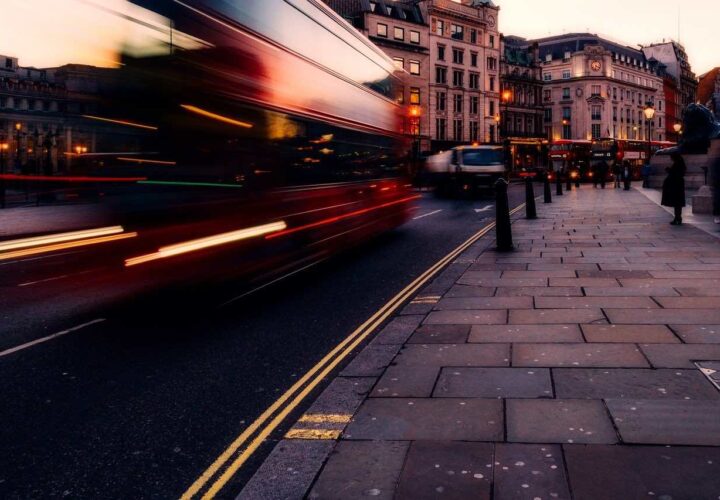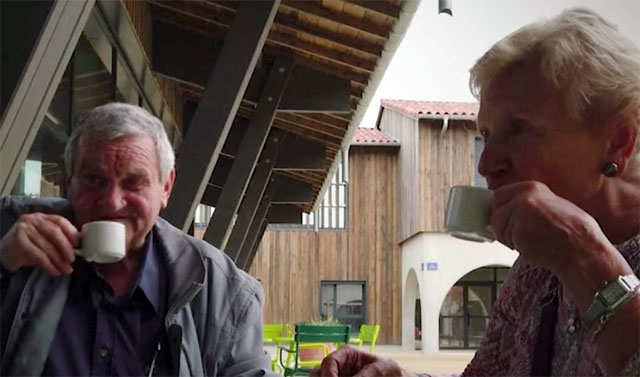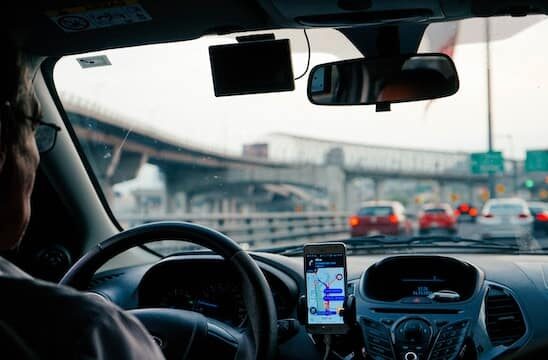One in 10 people over the age of 65 and one in three people over 85 lives with dementia. With no cure on the horizon, some cities are seeking ways to help people better manage the disease by instituting dementia-friendly infrastructure, policies and awareness campaigns.
Transportation plays a major role in our daily lives – it affords a person independence, flexibility and potential to explore. And for older adults who age out of driving safely, public transportation becomes critical to their daily routines. But especially for adults with dementia, public transportation can be a web of confusion. As the general population ages and dementia grows increasingly common, city planners are realizing just how much planning they need to do.
Just as people with physical impairments have been able to navigate life through ramps, handrails and automatic doors, some cities are thinking through the ways they can similarly accommodate for people with dementia. Asheville, North Carolina’s Asheville Rides Transit (ART) has committed themselves to raising awareness and improving communication between their drivers and those with dementia. Through a partnership with a local nonprofit organization Dementia Friendly WNC (DFWNC), they have been able to educate bus drivers on how to better understand, interact and assist people living with dementia who use city bus services, conducting sessions through Zoom and small group meetings to abide by COVID-19 safety protocols.
DFWNC educators teach drivers how to recognize common behaviors of people with dementia, such as difficulty communicating or moments of confusion. They also enlighten bus operators on how dementia changes the brain and how indications of the disease can be much more subtle than symptoms like memory loss. To account for the slower processing skills people living with dementia often contend with, drivers were taught to practice patience, providing extra assistance and leading with compassion.
Another lesson shared in the training is that a dementia diagnosis is not one-size-fits-all, but rather exists in stages. According to the Alzheimer’s Association, in the early and even middle stages of the disease, a person may be able to function independently, despite memory lapses or forgetfulness. The signs and symptoms can be subtle – especially at the beginning – which can often make it difficult for others to identify.
“The early-to-middle stages of the disease can last a decade or more, so many people are able to continue enjoying an active social life, including traveling, for multiple years,” John Dornblaser, Dementia Friendly Tulsa chairman, said. Dornblaser and his team have teamed up with Tulsa International Airport (TUL) to create the first dementia-friendly airport in the United States. Similar to Asheville’s public transportation strategy, Dementia Friendly Tulsa has begun training TUL employees on how to better interact with passengers and respond to potential concerns.
In addition, Tulsa will implement TUL’s Hidden Disabilities Sunflower Lanyard program, which was adopted in December 2020. The lanyards are worn by people who may need additional assistance and serve as a discreet signal to employees.
The city has also committed to reviewing current and future airport wayfinding and signage to make sure both are easy to understand.
How Cities Can Help People Find Their Way
Wayfinding is a term that refers to the ability to find one’s way in the world. Unfortunately, this sense is often impaired in people with dementia or Alzheimer’s disease. Samantha Biglieri, an urban planner with interest in dementia-inclusive design told CBC News Network that one way to help these individuals better navigate is by providing accessible signs and navigation clues, both in visual and tactile form. She learned this through her year long study between April 2018 and February 2019, where worked with 15 people living with mild stages of dementia in Ontario, Canada. Using GPS monitoring and required travel diary entries, she was able to track and better understand their experience of walking through the city.
Biglieri discovered that large statues or monuments can serve as landmarks, which help people with dementia better identify their route of course. “They also would say things like, ‘I can see the Wal-Mart or the McDonald’s sign from far away, and I know I’m going in the right direction,'” she recalled. She also discovered that more unique identifying landmarks were helpful as well, like a small flower garden or a picket fence.
Jonathan Paul Katz, a writer with a focus on community planning said there are other simple ways to streamline the experience: creating uncomplicated signage and straightforward navigation clues, decluttering environments (i.e. clear cut paths), strategically placing landmarks and visual cues like floor lines to help visitors navigate.
And, programs like Dementia Friends USA offer free, accessible training to help create more accomodating communities for those with the disease. A few quick tips include: giving them time to respond, using gestures and keeping it simple.
While these visual and tactile clues are important, they are not a replacement for listening to and communicating with this community with empathy and patience. Maintaining social interaction and practicing regular exercise is incredibly important to the well-being of people with dementia, Biglieri said. For them, she explained, successfully and safely participating in public transportation is central to living well.



